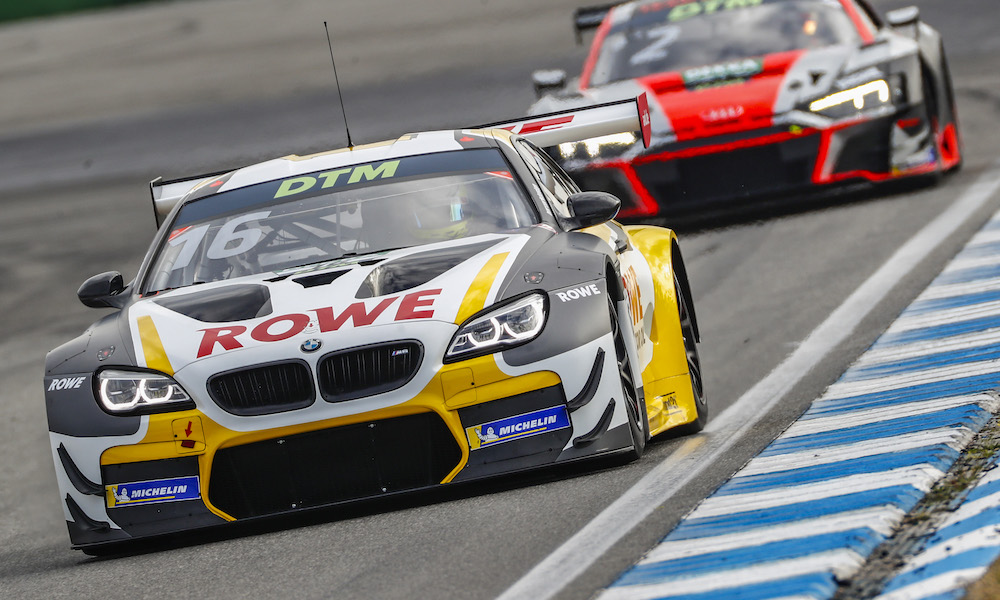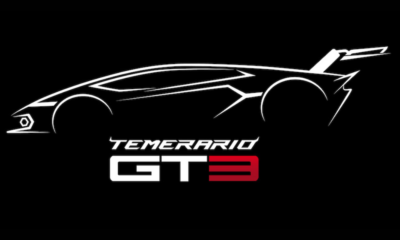DTM boss Gerhard Berger believes the series is currently in a “very good position” as it nears the start of a new era with FIA GT3 cars in place of the outgoing Class One rules.
The new-look DTM kicked off last week with an official two-day test at Hockenheim involving all of the teams that will contest the full eight-round campaign starting in June.
Berger, who is the head of the DTM managing organization ITR, told reporters during a press conference that he expects the adoption of GT3 to help revitalize the series with brand variety after only Audi and BMW brought Class One machinery to the 2020 grid.
“There are pros and cons,” said Berger. “I’ve never made it a secret that I’ve always been a fan of the Class One regulations where, without BoP, we had a level playing field.
“On the other hand, development costs were really high. It was something very nice for the technical fans, but a lot of them have said that GT3 cars are also good-looking cars and easy to identify.
“We have different sounds, different vehicle and engine concepts. So a lot more variety. The variety in terms of brands is something the fans need and wanted as well.
“That’s the big plus of GT3, even though we have to put a Balance of Performance in place to level the playing field and performance. I am confident that we are in a very good position in this respect.”
Berger indicated that he is satisfied with the number of manufacturers on the 2021 grid, despite the notable absences of some major GT3 players like Porsche and Lamborghini.
ROWE Racing has ruled out fielding its Total 24 Hours of Spa-winning Porsche 911 GT3 R, while Lamborghini teams Emil Frey Racing and Grasser Racing Team are known to have registered interest but ultimately opted not to pursue entries because of high costs brought on by a lack of manufacturer backing.
After Audi and BMW, Mercedes-AMG has returned to the series while Ferrari has joined through AF Corse and Red Bull. JP Motorsport will bring a McLaren 720S GT3 along for three meetings.
“It has been more or less fulfilled, but we are not there yet,” said Berger when asked about whether his goals regarding manufacturer numbers have been achieved.
“There are still some weeks prior to the first race of the season. It’s an ongoing process, so let’s see what the next few weeks will bring.
“The GT3 regulations make a great contribution to the brand variety and that’s something that we’ve wanted to achieve for a long time. As with all things in life, there are pros and cons.
“But I would say that the brand variety is very good and something that has been achieved. Also the quality of the field, with male and female drivers, is really first class and something for the fans to look forward to.
“I love to take on a challenge. I was aware of the difficulties of the pandemic and other things. I saw how strong the DTM is in an automotive country like Germany.
“There were a lot of obstacles of course, no doubt about it. You can’t take anything for granted. It’s a huge challenge, but with a positive approach, I am confident that it will all work out in the end.”
DTM On Course to Become “Fastest GT3 Series”
ITR’s director of competition and strategy, Michael Resl, has said that the DTM is ‘striving’ to market itself as the fastest GT3 championship in the world.
The lap times from last week’s Hockenheim test appeared to justify that intention when compared with recent qualifying sessions from Germany’s ADAC GT Masters series.
The pole times for the two GT Masters races at Hockenheim last September were 1:38.203 and 1:38.193 on slick Pirelli tires. The fastest lap from the DTM pre-season test was a 1:36.153 set by Lucas Auer in a Mercedes-AMG GT3 Evo running on Michelins.
Hockenheim gave ITR’s technical team its first chance to gather real-world data for corroboration with the AVL-built virtual car models that form the basis of the new BoP.
Resl explained that the BoP system “strives to check maximum performance” of the different GT3 cars. He doesn’t expect the field to be any slower in the next test at the Lausitzring, where the DTM will trial a “variant” of its BoP for the first race event at Monza.
“April in Hockenheim [gave] low temperatures and a favorable ambient pressure. That helps in terms of engine performance and gives a bit of a different picture,” said Resl.
“Naturally, DTM strives to be the fastest GT3 series. So our BoP is built to make the cars as performant as possible and make them shine, but there’s no specific high-speed BoP for Hockenheim. It’s more to give the teams a good basis to start testing.”
When asked how close the series wants its GT3 cars to get to the faster lap times produced by Class One machinery, Resl said: “It’s difficult to compare to Class One.
“Even if you’re a hardworking engineer, the car concepts from Class One to GT3 are obviously so different. That was not the objective when we decided to have GT3 cars in the DTM.
“The objective is to have a very, very performant GT3 series with a distribution between the manufacturers that is the closest of the GT3 series.”
Berger suggested that while the outright pace of the DTM’s GT3 cars will be important for the series, close competition between the manufacturers stands as his top priority.
“The most important thing is to have a transparent and fair basis to work on, to create and achieve wheel-to-wheel duels between two drivers, and between different brands and teams,” he said.
“That is what we are aiming at. It needs a very strong partner to achieve that, then the lap times are actually of secondary significance.”


























